 |
||

 |
A Porsche with a Stainless look at the 1967 IAA Automobile exhibition
SOURCE:
Deutsche Edelstahlwerke AG (Ed.): Mitteilungsblatt 5 / 1967, thyssenkrupp Corporate Archives
A Porsche with stainless look at the 1967 IAA Automobile exhibition
One of the main attractions at this year's international car exhibition in Frankfurt was a Porsche, type 911 S. However, it was not on the stand of the Stuttgart-based automobile manufacturer, but on the information office stand of ‘Stainless steel’, because the unpainted silvery shimmering body was not made of conventional steel sheets, but made entirely of stainless steel.
A series production, of this unique, "shiny" object, is currently not proposed- the stainless steel industry wanted to see the numerous advantages of the of this material for the automotive industry.
The motorist audience was interested in this issue because an effective solution against rust has not yet been invented
The German manufacturer of stainless steels also showed on the 43. Internationa Automobile Exhibition A comprehensive assortment of parts for the motor vehicle. Under the theme "Rust-proof on the car", at the observatory's stand, precious Stainless steel parts, which are now fitted as standard or are used as a accessories on the market are: bumpers, hubcaps, window and mirror mounts, tread and trim strips, wiper arms, exhaust apertures, antennas. In the commercial vehicle sector, body shells for one-and two story buses, for vehicles with box bodies and sales vehicles are made of stainless.
The following stainless steel grades have been proven to be particularly successful: with 17% chromium, steel with 17% chromium and 1% molybdenum and steel with 18% chromium and 8% nickel; Because they prove to be particularly resistant to the hard stresses of today's traffic — think of the stones thrown up by the tires, the bumps and scratches in the traffic throng or the parking, the aggressive exhaust and industrial gases ( Lantern Garage!) Or the corrosive scattered salts in winter. As these steels are rust-and acid-resistant through their entire cross-section, they still need preservatives for the protection layers. Even after a long hard use, its surface remains blank without any special cleaning effort.
In decades of development work, the German stainless steel industry has developed, for various requirements, special steel types which are ideal for mass production. These stainless steels are delivered today by careful management of the melting process in the electric oven, precise matching of the carbon and alloy contents as well as special heat treatments in a high, always constant quality for the automotive industry.
Our member of the management Board, diploma economist Rolf Hoffstaedter, chairman of the board of the Observatory of Stainless steel, announced at a press conference:
"The use of stainless steel for the motor vehicle is still in its infancy in the Federal Republic of Germany. Compared to other major automobile nations such as the USA, Japan, Great Britain, France and Italy, the proportion of stainless steel on the individual car is still relatively low. A few years ago, this share was so small that it could literally only be expressed in grams. In the meantime, thanks to the advanced attitude of some car manufacturers, it has increased to such an extent that the average weight of stainless steel per passenger car is about one kilo out of cars produced in the Federal Republic, with Individual makers using up to 8 kilos and more stainless on the car.
But the average quantity of one kilo is also low if you consider the average stainless portion of foreign vehicles. American passenger Cars contain hundreds of stainless steel parts with an average total weight of about 11 kilos, and even in the case of cars of the European automotive industry, stainless steel is more common than with German products.
This fact suggests that stainless steel used in German automotive productsis still relatively insignificant. The answer is two fold: the study of what German car owners expect from a car, their car, and what distinguishes Germans from foreign automobiles.In foreign countries however the car can already be seen as a daily commodity that should remain presentable without to much care. This changed perception of the vehicle, away from the prestige object, which it can no longer be because everyone has one, to a useful, low maintenance item, is also with us.
The desire for the metallic shiny decorative strip, hubcap and bumper is there but the other hand car owners have less desire to spend their time working on the car than in it. Here I see one of the tendencies that speak clearly for the use of rust free that hardly needs care or maintenance. The modern car should be made of a modern material that remains in its original state and supports the good looks and value of the vehicle.
The individual car owner's desire for a problem free or at least so far as possible problem free vehicle, without large maintenance costs and a high resale value of the vehicle is of course not new. Even the demand for a lasting good appearance of the car is as old as automobiles itself. What is new, however, in my opinion, at least with us in Germany, is that car buyers are no longer inclined to spend time and money on such things that are actually self-evident. The need for a sparkling automobile is strong, however, weakened by the willingness to work and pay for this brilliance.
The second tendency, which will have an effect on stainless steel, is based on price. It is one of the apparently ineradicable prejudices that stainless steel is disproportionately expensive. It is true that stainless steel used to seen in the consumer goods sector as a luxury material. These times have long been over. Today prices are comparable with those of existing parts for hubcaps, bumpers, door handles, trunk handles, decorative
Strips, stepping boards, window frames, stone protection covers, rear-view mirror housings, etc. I would like to make a specific statement, which may be astonishing: hubcaps and decorative strips in stainless steel are usually not even more expensive than in the surface-protected version.
So far I have outlined two trends that are advantages for the use of stainless:
First, the desire of the driver for problem-free metallic shine on the wagon, secondly the price. The third tendency in our favor I see in the manufacturing technology of the car manufacturers and the quality of the available rust Free steels.
When using stainless material, which without any surface treatment provides reliable protection against corrosion, the expensive and large-scaleequipment for surface protection is superfluous. Also the number of potential reclamation's plays a role — and again show the advantages for stainless.
If the advantages of stainless steel are so obvious for the car buyer and the
Automotive industry — then why isn't it used for everything thing that shines on the car ? I confess that there is no answer to this question, but I believe that we are not responsible for the answer.”
Ein Porsche mit Rostfrei Look auf der 1967 IAA Automobilausstellung
SOURCE:
Deutsche Edelstahlwerke AG (Ed.): Mitteilungsblatt 5 / 1967, thyssenkrupp Corporate Archives
Einer der Hauptanziehungspunkte auf der diesjährigen Internationalen Automobilausstellung in Frankfurt war ein Porsche, Typ 911 S. Er stand allerdings nicht auf dem Stand der Stuttgarter Automobilbauer, sondern auf dem der Information stelle Edel-stahl Rostfrei, denn die unlackierte silbrig schimmernde Karosserie war nicht aus herkömmlichen Blechen, sondern ganz aus Edelstahl Rostfrei geschneidert worden.
An diesem einmaligen ,,Glanz"-stück — eine Serienfabrikation ist zur Zeit nicht vorge-sehen — wollte die Rostfrei-erzeugende Edelstahlindustrie die zahlreichen Vorzüge dieses Werkstoffes für den Automobilbau demonstrieren.
Das kraftfahrende Publikum war an diesem Thema interessiert, denn ein wirksames Kraut gegen die Rostkrankheit am Auto ist bisher noch nicht gewachsen.
Die deutschen Hersteller rostfreier Edelstahle zeigten außerdem auf der 43. Inter-nationalen Automobilausstellung ein umfassendes Sortiment für das Kraftfahrzeug. Unter dem Thema „Rostfrei am Auto" waren auf dem Stand der Informationsstelle Edel-stahl Rostfrei Teile ausgestellt, die heute serienmäßig eingebaut werden oder als Zubehör auf dem Markt sind: Stoßstangen, Radkappen, Fenster- und Spiegeleinfassungen, Tritt- und Zierleisten, Wischerarme, Auspuffblenden, Antennen. Auf dem Nutzfahrzeug sektor werden Karosserien für ein- und zweistöckige Busse, für Fahrzeuge mit Kastenaufbauten und Verkaufsfahrzeuge zu- nehmend aus Rostfrei hergestellt.
Bewährt haben sich vor allem folgende Rostfrei-Sorten: Stahl mit 17% Chrom, Stahl mit 17% Chrom und 1% Molybdän und Stahl mit 18% Chrom und 8% Nickel; denn sie erweisen sich als besonders beständig gegen die harten Beanspruchungen des heutigen Verkehrs — man denke an die von den Reifen hochgeschleuderten Steine, an Stöße und Kratzer im Verkehrsgewühl oder beim Parken, an die aggressiven Auspuff- und Industriegase (Laternengarage!) oder an die korrosiven Streusalze im Winter. Da diese Stähle durch ihren ganzen Querschnitt rost- und säurebeständig sind, brauchen sie we- der Schutzschichten noch Konservierungs- mittel. Selbst nach langem harten Gebrauch bleibt ihre Oberfläche ohne besonderen Putzaufwand unverändert blank.
Die deutsche Edelstahlindustrie hat in jahrzehntelanger Entwicklungsarbeit für die jeweiligen Beanspruchungen besondere Stahl-typen geschaffen, die sich für die Massenfertigung eignen. Diese Edelstahle werden heute durch sorgfältige Führung desSchmelzvorgangs im Elektroofen, genaue Abstimmung der Kohlenstoff- und der Legierungs-gehalte sowie besondere Wärmebehandlungen in hoher, stets gleichbleibender Güte für den Automobilbau geliefert.Unser Vorstandsmitglied, Diplom-Volkswirt Rolf Hoffstaedter, Vorsitzender des Vorstandes der Informationsstelle Edelstahl Rostfrei, gab auf einer Pressekonferenz anläßlich der Automobilausstellung Erläuterungen zum Thema „Rostfrei im Automobilbau", die wir hier gekürzt wiedergeben.
„Die Verwendung von Rostfrei für das Kraft-fahrzeug liegt in der Bundesrepublik noch in den Anfängen. Verglichen mit anderen großen Automobilnationen wie USA, Japan, Großbritannien, Frankreich und Italien ist der Anteil von rostfreiem Stahl am einzel-nen Automobil bei uns noch verhältnismäßig gering. Vor einigen Jahren war dieserAnteil so klein, daß er buchstäblich nur in Gramm ausgedrückt werden konnte. Inzwischen ist er dank der fortschrittlichen Einstellung einiger Automobilhersteller immerhin so weit angestiegen, daß das durchschnittliche Einsatzgewicht von Rostfrei pro Personenwagen bei in der Bundesrepublik hergestellten Automobilen rund ein Kilo aus- macht, wobei einzelne Fabrikate 8 Kilo und mehr Rostfrei am Auto aufweisen.
Aber auch die Durchschnittsmenge von ein Kilo nimmt sich gering aus, wenn man den durchschnittlichen Rostfrei-Anteil ausländischer Fahrzeuge betrachtet. So wiesen amerikanische Personenwagen 1966 Rostfrei-Teile mit einem durchschnittlichen Gesamt gewicht von rund 11 Kilo auf, und auch bei Wagen des europäischen Automobilbaues ist Rostfrei häufiger als bei deutschen.
Dieser Tatbestand legt die Frage nahe, war- um die Anwendung von Rostfrei bei deutschen Automobilen noch verhältnismäßig / unbedeutend ist. Zur Beantwortung gehört zweierlei: die Untersuchung dessen, was deutsche Automobilbesitzer von einem Wagen, ihrem Wagen, erwarten, und was deutsche von ausländischen Automobilen unterscheidet.
Der Prestigecharakter des Automobils in unseren Breiten verleitet — oder verleitete die Automobilfirmen dazu, den einzelnen Wagen mit strahlendem Chromglanz vorzuverkaufen. Zwischen Hersteller und Käuferbestand insgeheim Einverständnis darüber, daß der blitzende Wagen einmal wöchentlich gewaschen wird, wobei auch die Glanz-teile gepflegt werden.
Im Ausland dagegen ist das Auto schon weithin zum Gebrauchsgegenstand geworden, der ohne aufwendige Pflege ansehnlich zu bleiben hat. Diese veränderte Auffassung vom Fahrzeugnutzen, weg vom Prestigeobjekt, das es gar nicht mehr seinkann, weil es ja längst jeder hat, zum Nutzgegenstand, den man gebrauchen und nicht umständlich pflegen will, setzt sich auch bei uns durch.
Das Verlangen nach der metallisch glänzenden Zierleiste, Radkappe und Stoßstange ist also da. Andererseits aber haben die Auto-besitzer immer weniger Lust, ihre Zeit statt im am Auto zu verbringen. Hier sehe ich eine der Tendenzen, die eindeutig für Rost- frei als problemloses Material sprechen, das kaum Pflege braucht. Man wünscht sich für das moderne Auto auch den modernen Werkstoff, der praktisch unbegrenzt im Ursprungszustand bleibt und ebenso dem guten Aussehen wie der Werterhaltung dient
Der Wunsch des einzelnen Autobesitzers nach einem problemlosen oder jedenfalls so weit wie möglich problemfreien Fahrzeug, nach Werterhaltung ohne großen Pflegeaufwand und, als Konsequenz der Werterhaltung, nach einem hohen Wiederverkaufswert des Fahrzeugs ist natürlich nicht neu. Auch die Forderung nach bleibendem guten Aussehen des Wagens ist so alt wie der Automobilismus selber. Neu jedoch ist nach meiner Auffassung, jedenfalls bei uns in Deutschland, daß die Autokäufer nicht mehr geneigt sind, für solche eigentlich selbstverständlichen Dinge Zeit und Geld aufzuwenden. Das Bedürfnis nach Glanz am Wagen, nach blitzenden Teilen ist nach wie vor stark, abgeschwächt dagegen die Bereitschaft, für diesen Glanz zu arbeiten und zu zahlen.
Die zweite Tendenz, die sich für Rostfrei auswirken wird, liegt im Preis begründet.Es gehört zu den offenbar unausrottbaren Vorurteilen, daß Edelstahl, und erst recht Edelstahl Rostfrei, unverhältnismäßig teuer sei. Richtig ist, daß Rostfrei früher im Konsumgüterbereich als Luxusmaterial mißverstanden wurde. Diese Zeiten sind längst vorbei. Wir sind heute in der Lage, uns beiden meisten Autoteilen einem Preisvergleich zu stellen, also z. B. bei Radkappen, Stoßstangen, Türgriffen, Kofferraumgriffen, Zier-leisten, Trittbrettleisten, Fenstereinfassungen, Steinschlagecken, Rückspiegelgehäusen usw. Ich möchte dazu eine konkrete Angabe machen, die vielleicht erstaunen lassen wird: Radkappen und Zierleisten in Rostfrei sind in der Regel nicht einmal teurer als in der oberflächengeschützten Ausführung.
Ich habe bisher zwei Tendenzen umrissen, die für die Verwendung von Rostfrei sprechen: erstens den Wunsch des Autofahrers nach problemfreiem metallischen Glanz am Wagen, zweitens den Preis. Die dritte Tendenz zu unseren Gunsten sehe ich in der fertigungstechnik der Automobilhersteller und der Qualität der heute lieferbaren Rostfrei-Stähle.Bei der Verwendung von Rostfrei-Material, das ja ohne jede Oberflächenbehandlung zuverlässigen Schutz gegen Korrosion bietet, werden die teuren und großflächigen Anlagen für den Oberflächenschutz überflüssig. Auch die Anzahl von Reklamationen spielt eine Rolle — und wieder sprechen die Erfahrungswerte für Rostfrei.
Wenn die Vorteile von Rostfrei so einleuchtend sind, für den Autokäufer und die Automobilindustrie — ja warum wird denn dann nicht längst Rostfrei für alles, was am Auto glänzt, oder jedenfalls glänzen sollte, verwendet? Ich gestehe, daß mir und uns auf diese Frage keine Antwort einfällt — aber ich glaube, für die Antwort sind wir auchgar nicht zuständig."
 |
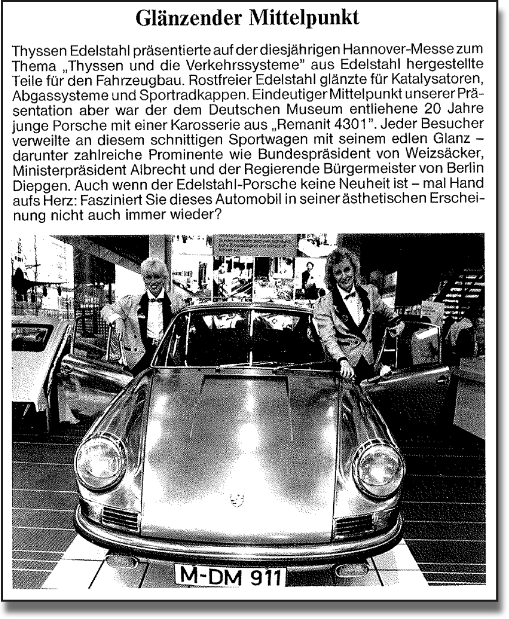
Sparkeling Centrepeice. Press release from the TEW Bulletin, 1986.
TEW Bulletin 1986:
At this year's Hannover fair, Thyssen Stainless steel presented parts for vehicle construction on the subject of "Thyssen and transport systems" made of stainless steel.. Stainless steel was used for catalysts, exhaust systems and sports hubcaps. The unique focus of our presentation, however, was the 20 'years young' Porsche borrowed from the German museum with a body made of "Remanin 4301 ".
Each visitor lingered on this sleek sports car with its noble splendour including numerous celebrities such as Federal President von Weizsäcker, Prime minister Albrecht and the ruling mayor of Berlin Diepgen. Even though the stainless steel Porsche is not a novelty-sometimes a hand on the heart: does this automobile not always fascinate you in its aesthetic appeal?
Glänzender Mittelpunkt
TEW Mitteilungsblatt 1986:
Thyssen Edelstahl präsentierte auf der diesjährigen Hannover-Messe zum Thema „Thyssen und die Verkehrssysteme" aus Edelstahl hergestellte Teile für den Fahrzeugbau. Rostfreier Edelstahl glänzte für Katalysatoren, Abgassysteme und Sportradkappen. EindeutigerMittelpunktunsererPräsentation aber war der dem Deutschen Museum entliehene 20 Jahrejunge Porsche mit einer Karosserie aus „Remanit 4301".
Jeder Besucher verweilte an diesem schnittigen Sportwagen mit seinem edlen Glanz darunter zahlreiche Prominente wie Bundespräsident von Weizsäcker, Ministerpräsident Albrecht und der Regierende Bürgermeister von Berlin Diepgen. Auch wenn der Edelstahl-Porsche keine Neuheit ist - mal Hand aufs Herz: Fasziniert Sie dieses Automobil in seiner ästhetischen Erschei-nung nicht auch immer wieder?

The sticker was used on the car and for general advertising.
Many thanks to the Porsche Archives and the Thyssen krupp Corporate Archives for there help in sharing their press releases, photos and links.
This stunning Porsche 911, which was first shown by Rost frei ( later taken over by Thyssen Krupp) in 1967, is in many ways a mystery. The car stands today in Munich, in a corner of the Munich ‘Verkehrszentrums’ museum, on a simple wooden plinth with a short description.
My attempts to find the complete story almost always lead to a dead end which is so surprising as German projects, especially those from Porsche, are always well documented.
In the late sixties the German Stainless steel AG was pushing the use, in the automotive world, of their various grades of stainless steel. ( More information in the full press release below ) and it is ‘presumed’ their marketing department decided to build a stunning exhibition piece to do so.
How they came to Porsche remains a mystery although it can be assumed that a Stainless Porsche would attract far more attention, as an exhibition piece than a Ford or other cars of the time.
Research about the project has to start at Porsche and to my surprise absolutely nothing was to be learned from them. The Porsche archives in Zuffenhausen have no records what so ever!. It was suggested I contact the Thyssen Krupp information centre and they where as helpful as they could be. They sent me the fascinating press release ( below) and a few other photos and stories but regrettably had absolutely no documentation about building the car but informed me that Blanco GmbH, the Stainless steel sink manufacture, was responsible.
Blanc & Co. was founded as a Family business in 1925 in the town Oberderdingen ( Baden). In 1951 they started producing stainless steel sinks (Nirosta) and is now one of the leading international manufacturers of domestic and catering equipment technology.
Stefan Kohl, Head of Corporate communication from Blanco stated in another article "It is correct, the stainless steel body of the Porsche was built by us”.
The body being built from cold rolled stainless steel, being mechanicaly and partly handcrafted then welded together.
The town of Oberderdingen ( Baden Würtenburg) is only 45km from Zuffenhausen which would make the logistics of such a project easy.
Blanco GmbH has no surviving documentation of the project which would be so great to see but then comes possibly the answer.
In 2017, a now 92 year engineer, Werner Herbold was interviewed by Hans W. Meyer from a German newspaper about the project. He was technical director and remembers this unique project well. He actually drove the car and recalls it being built from one type of stainless steel with the internal number 0.4301 which had a 9% Nickel content.
He goes on to say (and this is when the mystery returns) that the car wasn't built at Blanco but most probably a Porsche factory.
The archives of the Deutsche Museum hold a few pieces of information that seem to support this theory. The car registration documents were found and the only owner is listed as; The Information centre of Stainless Rust free Dusseldorf (die Informationsstelle Edelstahl Rostfrei in Düsseldorf). We can therefor assume that the same company was responsible for the project. The car was taken out of service in 1974 with more than 150000km on the clock and in November of that year given to the Deutsche Museum.
The car registration documents also hold one more secret. Next to ‘assembly’ stands the name Porsche which leads us to think that the Stainless Steel body was made at the Reutter factory in Zuffenhausen which Porsche had taken over in 1964. That is where the story basically ends but maybe hidden away in some long forgotten boxes we could find some old photographs of this fascinating project.
The car itself weighs 1030 kilos. The standard 911-S Coupe with the 160 hp two-liter six-cylinder was 1080 kilograms
Meaning that the car was actually 50 kilograms lighter than the existing car.
The ‘Rust free’ 911 is a stunning car with a more than mystical history. I really feel it deserves a more fitting resting place than a corner in the museum.
Sources for this English version of the 911 story.
1. Porsche Archives and old friends within the Porsche Group.
2. VDI Nachtrichten.Von Hans W. Mayer | 5. Oktober 2017 | Ausgabe 40
https://www.vdi-nachrichten.com/Karriere/Mysterioeses-Coupe-in-noblem-Gewand
3. German Museum, Porsche exhibition stand, information board.
4. Deutsche Edelstahlwerke AG (Ed.): Mitteilungsblatt 5 / 1967, thyssenkrupp Corporate Archives


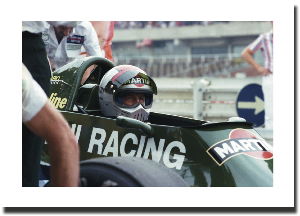
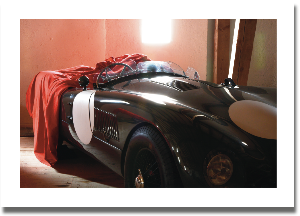
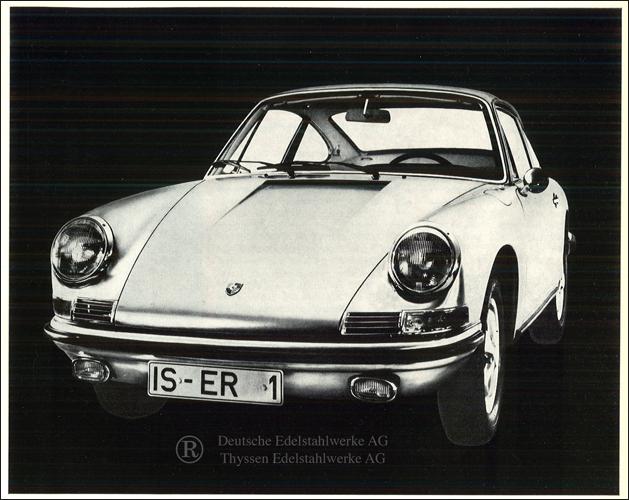
1986: Tyssen in house magazine
1967: The stunning Stainles Steel car is shown, literally in the wings, of the 43rd German International Car exhibition, IAA.
1986: The car was on display again 20 years later.
2020. The Porsche 911 on display at the Munich Transport Museum
Porsche History: The Stainless Steel 911 from 1967
'German Stainless'. Official press
release from 1967.
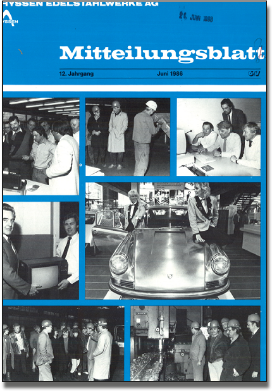
Copyright © 2021 : www.classicandmotorsport.de All rights reserved. IMPRESSUM DATENSCHUTZ
Take a look at other great pages on CLASSIC AND MOTORSPORT





